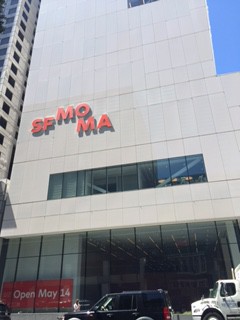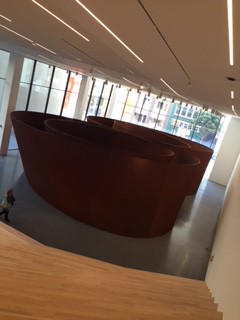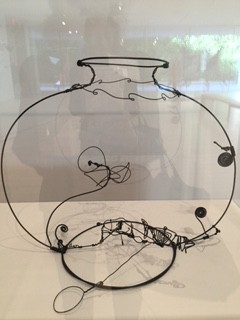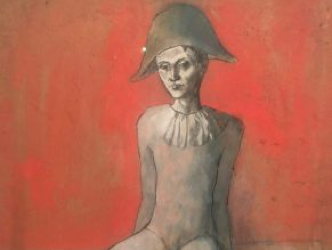In times past, the great European museums were founded around royal collections. In more recent memory, in the US particularly, it was through the largesse of business moguls that the finest museum collections were assembled, a trend that continues right up in the present day.
The latest example comes by way of San Francisco MOMA which is reopening its doors after a three-year refurbishment, its exhibition spaces multiplied twofold and bolstered by the 100-year loan of a generous collection of 1,100 works, 270 of which are being shown to the public from 14 May. They all belong to a trust founded by the Fisher family.
They all belong to a trust founded by the Fisher family. Donald Fisher who passed away in 2009, was the founder of the global clothes empire GAP, as well as Old Navy and Banana Republic and built up the collection with his wife Doris.
His eldest son, Bob, explains the idea behind the 100-year loan of the collection:
But what many people fail to say is: not every private collection is perfectly formed. And rolling out the red carpet for them can carry large risks for museums. Collecting for private purposes, especially in the present age, is inextricably bound up with questions of vanity and the overbearing influence of hugely powerful dealers, both not always related to the aesthetic or historical interest of the works themselves.
With that said, in Fisher’s case, the chance to integrate this collection is an extraordinary opportunity which gives all its strength to the new SFMOMA. The couple purchased art without consulting advisors, in an instinctive fashion, but as one can see, with a keen eye. Moreover, they acted in tight collaboration with museum curators of the time.
Their visit to Documenta in Kassel in 1987 and the Carnegie International exhibition in 1988, both of which placed a premium on German art, as well as their visit to the first Gerhard Richter retrospective at SFMOMA in 1988, left the couple far from indifferent. The Fishers’ collection of German art is exceptional including, among others, 23 paintings by Richter, but also impressive hauls of work by Sigmar Polke and Anselm Kiefer.
Even if the Fishers came to it relatively early (their acquisition of Kiefer works was at the end of the 1980s) as Gary Garrels, the senior curator of SFMOMA explains, they insisted on understanding the artists in depth and having some perspective on their careers – thereby ruling out very young artists. But they were collecting at a time when contemporary art was not the object of intense interest that it is today. Bob Fisher observes, for instance, that very few purchases were above the $1 million mark.
Their collections of Pop Art, especially the Warhols from the beginning of the 1960s that they bought in the late ’90s, are particularly interesting. The Fishers also had a soft spot for Calder.
The room in the museum dedicated to this American artist is remarkable. Alexander Rower, the head of the Calder Foundation, explains the importance of the artist for this art collector couple.
There are many things to like about this museum: among others the fact that it’s free for under-18s and that there are no restrictions on taking photos, a hypocritical rule that remains enforced in Art institutions around the world.
The architecture, it must be said, is unlikely to take your breath away. It has been integrated into the 1995 building designed by the Swiss architect Mario Botta. One can, however, appreciate that these gymnastics were never going to be straight-forward. Nonetheless, making your way around the building is a pleasant experience and the environment is well suited to appreciating the work.
A harmonious display of work, several remarkable pieces like the gigantic Richard Serra and the delicate Sleeping Woman, an oversized homeless woman by Charles Ray… SFMOMA comes highly recommended.
From 14 may: www.sfmoma.org
Support independent news on art.
Your contribution : Make a monthly commitment to support JB Reports or a one off contribution as and when you feel like it. Choose the option that suits you best.
Need to cancel a recurring donation? Please go here.
The donation is considered to be a subscription for a fee set by the donor and for a duration also set by the donor.















